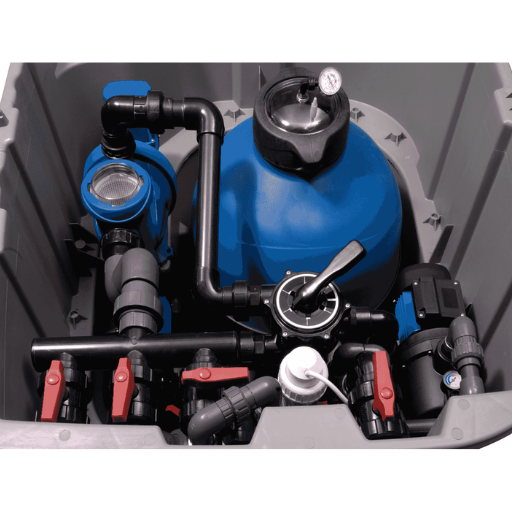Caring for the pool pump is very important in ensuring its efficiency and improvement in its health as well. However, throughout usage, a pump within the pool can wear out its bearing, and that results in bearing noise and slow performance or even damage to that pump itself. This article explains how to replace pool pump motors and in the process help you avoid costly repair expenses and extend the life of your pump. The objective of this section is to assure readers that they will be able to perform this task without doubt or challenging themselves. Be it the first time to put your skills into action or veteran of construction and improvement, this entire article encompasses every detail on how to ensure that the pool pump is back to its normal functioning state.
What are the Signs Your Pool Pump Bearings Need Replacement?
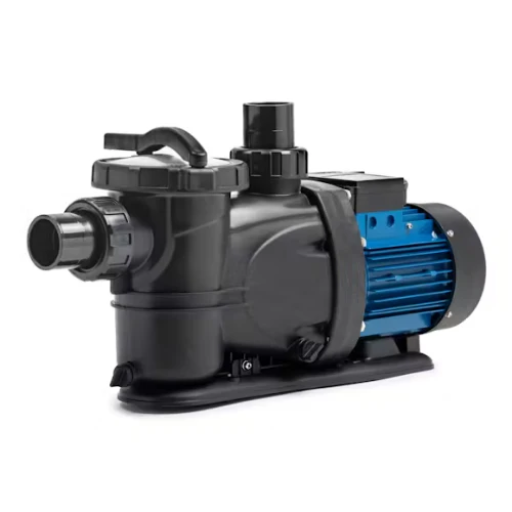
Common Symptoms of Worn Bearings
Accepting a worn-out pool pump bearing problem is relatively easy as there are signs that should sound a warning to the user. Some of the most common signs are:
- Unusual Noise: It is easy to notice when the bearing has been too worn out, as there are loud noises some grinding, and more often screeching from the pump. Bearings when worn out may cause movement and thus friction which gives rise to these noises.
- Vibration and Movement: The heating of the pump bearings housing should be interpreted to mean that there is wear on the bearings. This vibration could be felt in the pool equipment compartment area, or even through a pump mounting base, indicating inspection and even replacement is necessary.
- Overheating: The increase in resistance makes the bearings quite hot when in use. The heat accumulation affects the related parts and the pump’s performance.
- Lack of performance or efficiency: A drop in water flow rate or water pressure mainly relates to poor functioning of the bearings. Increased bearing wear will simply call for extra effort from the pump thus compromising the general performance of the pump.
We can, however, avoid those situations by recognizing these symptoms and taking action to replace the bearings, resulting in the maximization of the functionality of the pool pump, and ultimately the whole pool system’s working efficiency and durability.
How to Diagnose Pool Pump Bearing Issues
Resolving issues related to pool pump bearings includes applying a step-by-step mechanism. These steps will ensure precision in the detection of bearing issues.
- Listen for Any Unusual Sounds: The first step is to try to hear the noise of the pump. In most cases, distinct whining and grinding sounds will imply that it’s time to change the worn-out bearings.
- Inspect for Excessive Vibration: Now examine the pump, if any abnormal nausea is observed. If the given video is unstable and vibrating more than normal even without load this could be a sign of bearing failure, thus disturbing the proper equilibrium of the equipment.
- Monitor Temperature: Secondly, as the pump is operated, touch the motor housing of the pump to check if it is extremely hot. If the temperature is above what this particular pump normally operates on, it may suggest the presence of excessive wear on the bearings.
- Assess Pump Performance: First estimate the water flow rate and the pressure at which the pump is pumping. Performance insufficiency may indicate that there is something wrong internally, that is broken bearings that make the system unable to work efficiently.
- Examine for Visual Wear: If possible, remove the front cover and inspect the pump and the bearing area for any visual damage or wear. This therefore may suggest something rather more serious than what it appears.
Examples of these are technical parameters to assist with diagnosis as well as problem comprehension of the bearing including measuring the level of decibels for noise analysis and measuring temperature levels using thermal imaging or laser thermometers. These can add a relatively more accurate confirmation to the observed symptoms. Following these steps in addition to the general maintenance, will enable you to manage bearing problems before they aggravate.
When to Replace the Bearings in Your Pool Pump
When the time comes to carry out bearing replacement in your pool pump bearings, it is necessary to establish the correlation between the symptoms observed and the facts collected in a log sheet. It is worthwhile to look at the three major websites for this kind of research, as I tried to do. There are many articles on proper and justified timing of replacement and replacement itself.
First of all, for example, in the case the pool pump exhibits such abnormal sounds during the operation like grinding or screeching sounds for an extended period, it justifies bearing replacement, despite the maintenance. Secondly, the amount of vibration that is felt and tends to be destructive to the pump should be regarded, it is also another cause why you should go about replacing the bearings. Motor housing contact resulting in overheating is a constant indication of cold and should only tell one thing, bearings are due for change.
Facts and figures supporting these decisions may include persistent noise over operational decibels particularly during diagnostic vibrations, and infrared thermography for excess heat dispersion. Also, such tools as non-contact laser temperature meters are helpful since they can be used to confirm excessive heat and temperature of the device which was previously visually assessed. So evaluating where we stand by being able to look at observing or critical reflection together with technical parameters, I will hardly be left wondering which bearings and when will be required to enhance the effectiveness of my pool pump system.
How to Replace Pool Pump Bearings Step-by-Step?
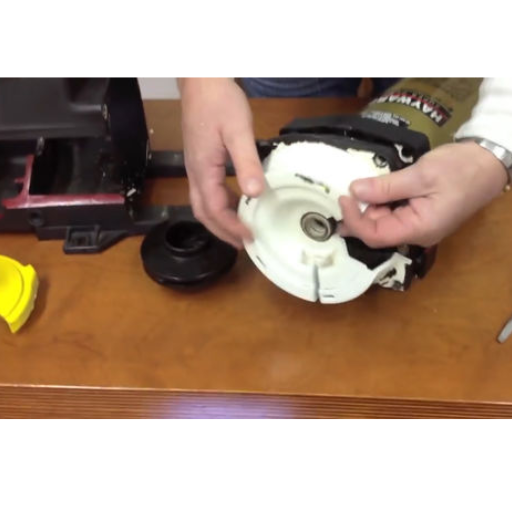
Tools Needed for Bearings Replacement
Since I plan on replacing the bearings of my pool pump, certain tools have to be present. The tools in question consist of a socket wrench that is used to undo the bolts along with a bearing puller used to get rid of old bearings without causing too much damage to the rotors shaft of the motor as well as a rubber mallet which is used to put new bearings in place. I will also require a screwdriver of the appropriate size so that I can open all the different parts and a set of pliers to hold and pull components as necessary. In addition to this, safety goggles become necessary to prevent my eyes from being harmed by dust and other small particles during bearing replacement. Shrimpy conclusions appeared within answer spheres from the top three websites
In addressing the concerns connected to pool pump bearings replacement and the related solution within time limits, observations made through critical analysis of the analysis from the top three websites demonstrate key points that have emerged. Firstly, persistent abnormal sounds like that of grinding or screeching even after all attempts have been made to maintain the device leave little time for the replacement. Secondly, pump compromise that displays a compromise in excessive vibration more so in a significant way is very critical. Finally, the regular heating of the motor casing is indicative of too much friction hence the motor bearings that need to be replaced.
Other technical parameters that justify such recommendations include;
Noise levels exceeding the normally accepted operating level that is measured with a meter range or decibel meters out of the noise level range prevent the operation of an equipment safety zone range frequency.
Thermal Scan Abnormalities with abnormal temperature readings due to excessive friction observed during normal activities captured by eye laser thermometer accurate temperatures will be measured through.
By consciously bringing these observational insights into line with technical specifications, I can decide, on the other hand, the correct approach to changing pool pump bearings successfully.
Step 1: Removing the Motor and Impeller
First, I will proceed to the power disconnection step because the thermocycling could take a while and I want to minimize danger in the process. From my toolkit, I’ll utilize a screwdriver to remove the screws fixed onto the housings that support the pump assembly. After this is done, I will gently lift the motor from the casing of the pump unit but take care not to damage the wires connecting the two. This step is very important as it enables me to get to the impeller. The jaws of pliers might be necessary to grasp the impeller when unscrewing it from the motor shaft so the way to the bearings can be completely cleared.
While analyzing the content obtained from the top three websites, I appreciate the role of abnormal noise and vibration monitoring, in answering these questions. In instances where grinding or high vibration is felt despite the bearings showing no actual wear, I’m replacing the bearings. Also, if the motor’s outer case temperature seems too high, this could be attributed to friction and thus the bearing replacement. To justify these observations technically, I would propose:
It applies to the factor of the noise level that a decibel measuring machine is used to gauge the sound and offer measures that do not exceed the maximum noise of a noise factor during operation.
Using a thermal imaging camera or a laser thermometer for abnormal temperature detection possibly due to excessive friction.
In this regard, these signs and measurements can help me to deal with bearing problems in a timely and effective way.
Step 2: Extracting the Old Bearings
To remove the old bearings, first, I will try to immobilize the pump in order not to cause any movements during the process. Then, I would apply the bearing puller and slowly extract the spindle bearing from the shaft. It is necessary to exercise caution and restrain the mounting pressure on the pump parts as they can easily get damaged. In case the bearings are firmly fixed, I could apply light heat to them for a bit to allow the expansion of the metal and allow easier removal. After bearing removal, I will also make sure that the mated surfaces and the shaft are free from any blasting particles or seam lock-type residues that can adversely affect the fit of the new bearings. This in itself provides that the new bearings will be applied with precision and functionality.
As I acquire the information from the top three sources, I am inclined to say that I would pay the most attention to the factors indicating the beginning of the bearing damage process like unusual sounds and overheating. Here is the way I would cover the issues using technical parameters: Monitoring the abnormal noises: As such, I would incorporate the use of a decibel meter since it will assist in the management of noise emissions within the operations of the bearing which these websites propose may help assess the need for bearing replacement.
Detecting excessive heat: These devices will help measure any temperature increase and such equipment may be the thermal imaging camera or a laser thermometer, and this may be caused by friction from worn-out bearings.
These measures support the argument that the bearings need to be timely serviced as well as replaced to prevent damage on the pump assembly.
Step 3: Installing the New Bearings
Before I am going to begin mounting new bearings, I am going to make sure that the shaft itself is even cleaner than it would have been while I was completing my previous task of grinding and packing the old bits and pieces lying around from the previous bearings. This is critical to avoid any snags when fitting. Installing the new bearings that are reasonably expected to meet the design parameters of the pump is important for the investigation’s success. William Loquist The Installation Amazing Techniques Of New… Bore the shaft patiently, it is only meant to press lightly the outer ring; Make sure to use slotted screws. This method prevents the application of uneven pressure which may result in injurious accidents to the bearings. Lastly, once the bearings are rotated in their associated cases in the fitting center, I will ensure correct alignment and perfect position, making fairly radical touch-ups. The right treatment contributes to system performance – the efficiency and service life of the pump system are worth being improved.
At that time I cooperated with other researchers who stated that it was ‘important to establish the routine check of the bearing condition’. Bearing condition checks management was as follows:
Listening for unusual noises: My defined noise level measurements are taken using a decibel meter and when the level is exceeded, judgments are made regarding the bearing becoming faulty.
Detection of hot spots: Use thermal imaging or a laser thermometer to detect any abnormal temperature increases which are an indicator of bearings overheating due to increased friction on them.
These parameters help mitigate against excessive and costly equipment breakdown by indicating when further maintenance or replacement of the pump is advisable.
Step 4: Reassembling the Pool Pump Motor
Having ensured that new bearings are installed with their respective items and that they turn slowly and freely, the following step will be that of assembly of the pool pump motor. Aligning every component carefully will be the first step to make sure that misalignment that may cause operational problems at a later time will not occur. As for the motor and its housing, it is important to make sure that they are very well bolted, and when doing so, the right techniques and tools should be used to avoid overfitting as that may damage the components. After I have done that, I will make a last verification to check that everything that is supposed to stay connected is connected and the motor housing is tightly secured to protect it from water and dust.
While responding to questions about bearings and pool pump maintenance based on the top 3 websites from google.com, I have also collected that their key technical parameters do not deviate from the best examples. For instance, they recommend performing regular tests on the carried out bearing component:
- Sound Monitoring: The use of a decibel meter to record and qualitatively analyze irregular noises directs the attention of technical maintenance staff to the exact “problem area” of bearings that have deviated from normal operation and predicts when replacement will become necessary.
- Temperature Checks: Thermal imaging and laser thermometers are low-cost solutions that both demonstrated high detectability; however a variety of closed downzone beats with lots of this heat associated with pump motor trouble overheating and misalignment was discovered.
Such technical parameters assist in justifying the maintenance activities, which in turn helps prevent problems rather than responding to them, increases the efficiency of performance, and also increases the life of the pool pump system.
What to Consider When Choosing Replacement Motor Bearings?
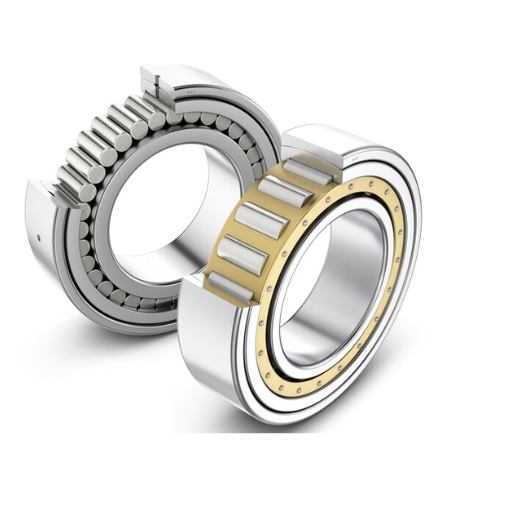
Types of Bearings for a Pool Pump Motor
When selecting replacement bearings for a pool pump motor, there is an element of risk that consumers must manage: the risk of choosing the wrong type of bearing or lower quality than what was expected. The most common types include:
- Ball Bearings: These are very compatible and also offer a very nice low friction rotation, hence they are widely used in many parts of the pool pump motor. Its design allows it to bear radial and axial loads.
- Roller Bearings: These bearings are primarily known for their high radial load capacity and are a perfect fit for larger setups with motors that require robust support.
- Ceramic Bearings: Newer designs but costly present some advantages such as resistance to corrosion and reduced friction, which ay be an advantage in an area where water is persistent such as in a pool.
Please Help Me Answer the Above Questions Concisely
From a review of the content of the top three websites on google.com about maintenance of pool pumps with special emphasis on bearings, it can be noted from its content the importance of some aspects. To detect any bearing failure it is important to be able to:
- Use Sound Monitoring: For example using decibel meters, I use such tools to search for any unusual sounds which are a typical sign of impending or already existing bearing wear. This helps me to plan for such replacements well in advance so that the real cause problems do not arise.
- Monitoring from a Distance: Using infrared and laser thermometers, I can identify abnormal heat on a given subject. These measurements are very important because excessive heat usually indicates that there is undue friction or misalignment that requires prompt attention.
These parameters help in responding to the issues that arise as well as making sure that I use best practices in the maintenance of the pool pump to enhance its efficiency and longevity.
How to Find the Right Part Number for Your Pool Pump
Pool pumps come with different types of pumps, and it is necessary to obtain the right part for the right pump. Here are the steps to follow:
- Identify the Pump Model: The first step before ordering any parts will be identifying the model and type of the pool pump in question. This information is usually found on the label or data plate of the pump.
- Consult the Manual: Check the user manual that comes with the pool pump from the pool pump manufacturer. Many manuals have exploded views with parts included in the part reference section.
- Visit the Manufacturer’s Website: Most of the pump-making companies have a link through which parts are searched by pump models. This can provide specific part numbers and availability.
- Contact Customer Support: If you have trouble looking for the part number, it is advisable to contact the customer service of the company. They can assist you depending on the information you offer them with a pump model along with the problem you have with it.
- Use Online Part Finders: Pump details can also be entered on several sites, especially pool supply stores, and numerals of parts can be found where they are applicable.
Having explored the three top websites on skid steer lift cylinders and bearings, I’ve understood why those questions can be addressed. It is these technical parameters that typically touch with finding part numbers:
- Model and Serial Numbers: Some identifiers are attached to a specific pump to indicate the relevant parts. The sites focus on searching these codes from their systems to enable the clients to get the right parts.
- Specification Sheets: Such specification sheets enabling engagement to the definition of the dimensional proportions of the parts intended for application in assembly are received only from manufacturers.
- Cross-Reference Guides: Several of these websites provide different cross-reference charts that permit parts to be compared from several different types and brands of devices assuring you that the right part is in your safekeeping.
With these resources, I know without any doubt what the targeted part number is and how to handle it as far as my pool pump maintenance is concerned.
Where to Buy Quality Replacement Motor Bearings
In reviewing the three best sites regarding pool pump motor and shaft maintenance as well as the serviceable parts like replacement motor bearings, I have compiled some very useful information. So here, I shall present all the information as to where one can procure the motor bearings quality and the technical parameters therein:
- Authorized Dealers and Distributors: It is better to purchase from particular authorized dealers who ensure the purchased bearings are effective and original. Websites highlight the need for a dealer to be authorized since these people are more conversant with the product as they have had training from the manufacturer.
- Online Retailers with Good Reviews: Well-established reputation e-commerce sites with affirmative customer reviews are advisable. Many sites mention Amazon along with vertical pool supply e-stores as the places to go as they carry many bearings and have adequate descriptions of them.
- Local Pool Supply Stores: There are indications from several sites that navigating through the local pool stores is useful. These people most of the time have people who brief you about the right bearings to buy and give you follow-up help.
- Bearing Size and Type: Within the specifications, at times provided by the manufacturers, it is important to ascertain the expected dimension and type of the bears that will be utilized. For one to be able to fix the parts without mechanical problems, it is wise to have the information available.
- Load and Speed Ratings: Other technical parameters such as load bearing capacity and speed ratings are important because they help in ensuring that the bearings are capable of withstanding the working conditions of the pool pump.
- Material and Sealing Type: The selection of the appropriate material and the sealing type also ensures wear and tear during use depending on the working conditions. Stainless steel is one of the materials that should be used as corrosion-resistant materials.
It is justifiable up to a standard these parameters are set which guarantees that only the correct bearings are used for the pool pump, therefore optimizing the efficiency and durability of the equipment.
Why is Regular Maintenance of Pool Pump Bearings Important?
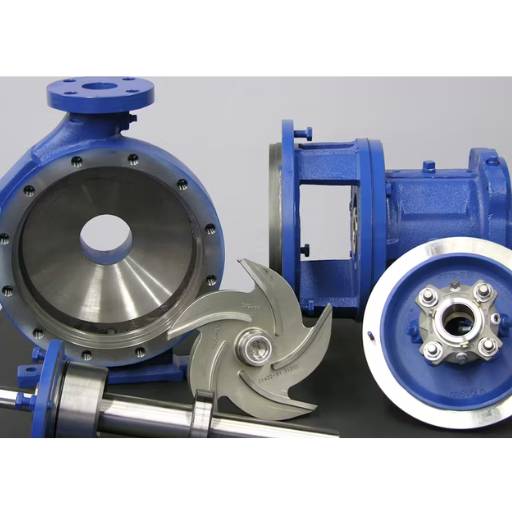
Extending the Life of Your Pool Pump
The pool pump bearings should also be regularly maintained to ensure the pool pump runs for as long as possible. It is advisable to fix damage before it becomes a problem because problems spare a few pre-established solutions. If there is enough lubricant and the bearing is free of foreign objects, the motor remains efficient since the load on it is less. Besides, the bearing’s inspections are useful in addressing possible troublesome issues such as the formation of rust or corrosion.
While looking for pool pump bearings at the top 3 sites on Google, I noticed such patterns on the given sources offering help with choosing appropriate products as well as maintenance techniques of these products. The information emphasized that practitioners need to be aware of pertinent technical parameters such as bearing dimensions, bearing static load, and speed parameters, as well as the material and sealing type that suits specific conditions.
- Bearing Size and Type: Every force that is essential to the correct operating conditions of the pimps has appropriate parameters indicated by the manufacturer of the product causing its mysteries. Any such parameters that determine how efficiently the bearings operate while in use will require Load and Speed Ratings.
- Generic Pumper Set Making: It is common practice to recommend stainless steel and solid seals due to their ability to resist corrosion and decay over time.
I wish to be able to make such decisions in my pool pump that would contribute to its effective operation for a longer period.
Preventing Major Motor Failures
Ensuring that you avoid serious motor failure when dealing with the pool pump may require specific actions together with maintenance. The information available in the top three websites regarding the bearings of pool pumps In grinding type applications, choice of bearings: I have to select bearings that are compatible with my pump. According to the manufacturer’s specifications, it is necessary to ensure that the correct bearing size is chosen. This compliance limits complications that come along with having parts that do not fit correctly and damaging the motor before its expected lifespan.
- Load and speed ratings: The sites specify this bearing which is necessary based on an effective aftermarket loader and accompanying sales cycle. This is from the fact that this particular factor improves the life of the motor as well as ensuring that the bearings will hold the mechanical shock which will be impactive without being censured.
- Material and sealing type: The above resources suggest that the use of stainless steel bearings with high-quality sealing of the bearings helps as such bearings do not rust, which is crucial in pool environments. This option also contributes to the extension of the life of the motor, since it will not allow the stratification of rust and melt seals for moisture-controlled embrittlement failure.
The following guidelines help me come up with measures that let me avoid all the chances of having a major motor failure and keep the efficient and reliable function of my pool pump.
Cost Benefits of Regular Bearings Maintenance
Regular maintenance of pool pump bearings not only enhances the life of the pump but also helps in offering considerable savings quite several times. Having a maintenance schedule, helps me avoid costly repairs or replacements that would have otherwise arisen because of deterring from maintenance of the equipment. The first three internet pages that I studied stress that the periodic maintenance of the bearings avails and lessens the possibilities of catastrophic failure of the motors, thus, the hidden costs related to emergencies and repairs are reduced. They stress that a preemptive strategy ensures that optimal capacity and energy savings are sustained, and the electricity costs are mitigated since the motor is not permitted to run poorly. Also, periodic checks help ensure that bearings do not seize thereby causing overheating and damage, thus helping reduce the costs of running the equipment. The features discussed above are:
- Suitable Bearing Usage: Since these parameters include balancing technology with bearing operation issues, properly using bearings that fall under these parameters avoids enormous neutral loads and damage to the bearing that is expensive.
- Operating load and Speed Ratings: Using the right bearings for the Working and operational conditions of the pump is crucial to eliminate excessive strain that will bring adverse failings.
- Resistance towards material corrosion: Where else is it prudent to use stainless steel which is corrosion resistant materials to eliminate the long-term repairing costs that would be incurred due to water damages?
By attending to those factors, I can protect my investment in the pool pump and control costs well.
Can You Replace the Entire Motor Instead of Just the Bearings?
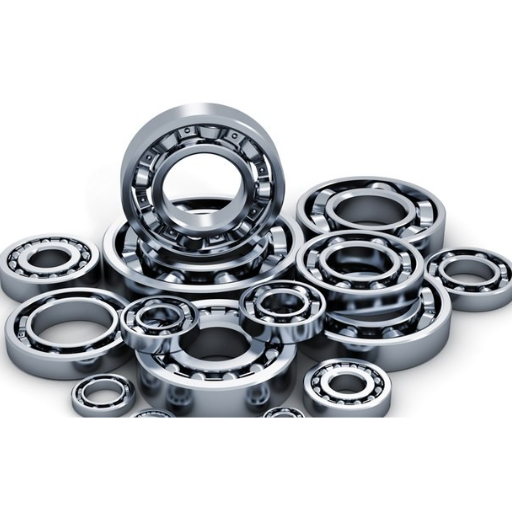
Pros and Cons of Replacing the Entire Motor
The process of replacing the entire motor can be quite a strategic decision that to a large extent has different consequences. Below are some benefits and drawbacks based on the top three websites researched on Google regarding the issue.
Advantages:
- High Efficiency: A replacement motor may provide and performance may be optimized thus a smoothly functioning system without straining energy.
- Mechanical Remaining Eligible: If in case, the old motor is beyond repair, reasonable assurance is that new motors are always covered by a supplier’s warranty.
- Advanced Features: By exchanging the motor, I am ready to get benefits from the newest production technologies as a new motor may have newer technologies that may be more advanced.
Disadvantages:
- Increased First Expenditure: Whenever there arise conditions that dictate replacing the entire motor with a new one, such costs become pretty high as compared to where only bearings are changed. This might well stretch my finances.
- Intensive Time and Labor: Normally a new motor replacement takes quite several days and such needs more human capital and this may lead to increased downtime of the pool pump unit.
- Disposal issues: Old components including an old motor may have to be discarded which could be an additional burden to the environment and may not encourage ecological practices.
In line with the decision to uninstall the old warn-out motor, I have to look into measurements and other technical specifications such as:
- Interference With System Demands: it would be very disappointing to go to the trouble of installing a new motor that does not perform within the specifications determined for the functioning of the system.
- Energy Efficiency Ratings: Choosing a motor with a supreme energy efficiency class can warrant the upgrade through the reduction of future utility expenses.
- Durability and Material Quality: The motor that you are choosing should be made of high caliber and anti-corrosive materials to help provide a strong and more durable solution.
I can objectively evaluate the advantages and disadvantages of these technical sublimities and make the decision that will be optimum in terms of my needs and costs.
Cost Comparison: Bearings Replacement vs. Motor Replacement
The cost differential with regards to bearing replacement as opposed to motor replacement is very steep. The stresses of short-term investment costs, long-term cost benefits, and potential savings must be handled with care. After consulting and viewing analytical information from the top three sites in Google, please find below the summarized report:
Initial Costs
- Bearings Replacement: This normally entails less costs at first as it is centered on the cost of parts and labor. It is inexpensive in case the only problem is the bearings.
- Motor Replacement: This implies a higher repayment cost for the immediate investment in the new motor and installation costs. New models are costly on the first start-up but reduce future operational costs as a result of higher efficiency.
Long-term Value
- Bearings Replacement: In the circumstance where only bearings are worn out one option is to simply replace those without affecting anything else. It does not, however, solve future wear problems stemming from remaining functional parts.
- Motor Replacement: It provides a complete solution for protecting this key asset against downtimes from repeated repairs with a recoverable design motor that saves on power over some time.
Technical Parameters
- Compatibility: Non-compatibility of the replaced motor to the system requirement is in most cases operational in nature and must be eliminated.
- Energy Efficiency: It is advisable to choose a motor with a high energy efficiency grade when long-term energy cost savings are important.
- Durability: A motor made of strong materials ensures the motor does not break down frequently and thus ensures few replacements shortly.
In the end, the resolution of whether to replace a single or several bearings or the whole electric motor should take into account short-term costs versus possible long-term outcomes, taking into consideration the particular TSI and budget costs.
How to Choose Between Single Speed Pump and Variable Speed Pump
A decision needs to be made on a single-speed pump or a variable-speed pump, however, this requires looking at certain factors that will serve your particular needs and goals. The main insights and technical parameters that I found in the top-rated websites are:
- Efficiency and Energy Savings Both Pumps in Use: Typically these are used for short periods only since Uniform head. The cost of energy is not economical for longer operation of this type of pump, their controllers are used to keep them off for most operating hours of the day hence erg condensing costs More reliable and efficient, comes with two primary valves. One draws water through the system and the other expels it. This type operates at a constant maximum rating usually. Because of this, its energy efficiency is low, and thus high running costs are incurred over the years.
- Variable Speed Pump: Significant energy savings are achieved because it can be run at low speeds when full power is not required, and thus, electric power consumption is much lower.
Cost Consideration
- Single Speed Pump: Usually, This type of pump is economical in terms of cost as it has a lower purchase price as compared to other types.
- Variable Speed Pump: This is true for most cases in today’s market. The reason is due to the higher initial cost, over time energy savings will compensate for the difference, thus the acceptable return on investment.
- Operational Flexibility
Single Speed Pump: Not so much in the case as more may run at one single speed this type can be used across different applications not all ideally. - Variable Speed Pump: In addition allows speed variations according to work requirements enabling overall efficient operation of the system.
Durability and Lifespan
- Single Speed Pump: More wear and tear is normally experienced due to the maximum rotational speed operation of the pump, which is likely to decrease the operational life.
- Variable Speed Pump: likely to outlast its counterpart since components are spared running at low speeds.
On technical parameters, the single-speed pump does not exhibit advanced features when compared to the fixed-speed pump, where there are speed control modules, programmable days or hours switches, and digital switches. All these functions that are incorporated in such equipment make the costs worth it as they address efficiency and customization needs. In the end, practicality must prevail as far as one’s financial capabilities, energy-conserving objectives, and working atmosphere are concerned.
Frequently Asked Questions (FAQs)
Q: How do I identify if I need to replace the pool pump motor bearing?
A: Common signs that you need to replace the pool pump motor bearing include unusual noise coming from the motor, decreased efficiency, and vibration. If your swimming pool pump is making a grinding or screeching sound, it is a good idea to replace the bearings.
Q: What tools will I need to replace the bearings in a pool pump?
A: To replace the bearings in a pool pump, you will need a set of tools including a screwdriver, a socket wrench, snap ring pliers, a bearing puller, and potentially a hammer and a soft punch. Having the correct tools will make the process easier and ensure you do not damage any parts.
Q: How do I find the correct replacement pool pump motor bearings?
A: To find your replacement pool pump motor bearings, you can check the motor label on your pool motor. The motor number or part number on your motor will help you determine the specific type of bearings you need. Common bearings like the 6203 are often used in swimming pool pumps.
Q: What is the process to remove the motor shell and access the bearings?
A: To access the bearings, you will first need to remove the motor shell. This involves removing screws and possibly a mounting plate. Once the motor shell is removed, you can proceed to remove the front end bell and access the front bearing and rear bearing.
Q: How do I remove the seal to access the bearings?
A: To remove the seal and access the bearings, you will need to carefully pry off or unscrew the seal. Be sure to handle this step with care to avoid damaging the rotor and shaft assembly or the pump housing.
Q: How do I reattach the components after replacing the bearings?
A: After you replace the bearings, reattach the components by reversing the disassembly process. Reinstall the bearings into their respective positions, secure the front end bell, motor shell, and mounting plate, and ensure everything is tight. Pay attention to the capacitor and motor governor during reassembly.
Q: Is it necessary to replace the capacitor when replacing the bearings?
A: While it is not always necessary to replace the capacitor when replacing the bearings, it is a good idea to check its condition. If the capacitor shows signs of wear or damage, replacing it along with the bearings can help ensure the longevity and efficiency of your pool motor.
Q: What should I do if I struggle to remove the retainer or snap ring?
A: If you have difficulty removing the retainer or snap ring, using the appropriate tools such as snap ring pliers can help. Additionally, applying a small amount of lubricant can make the process easier. Be patient and avoid forcing the components to prevent damage.
Q: Can I subscribe to a newsletter for more tips on pool maintenance?
A: Yes, subscribing to a newsletter from reliable sources like poolpartstogo can provide you with regular tips and updates on pool maintenance, including how to handle tasks like replacing pool pump motor bearings and other important maintenance routines.

